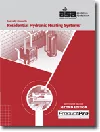Upselling smart thermostats for hydronic systems
“Understanding your customer and their concerns are the key to upselling.”
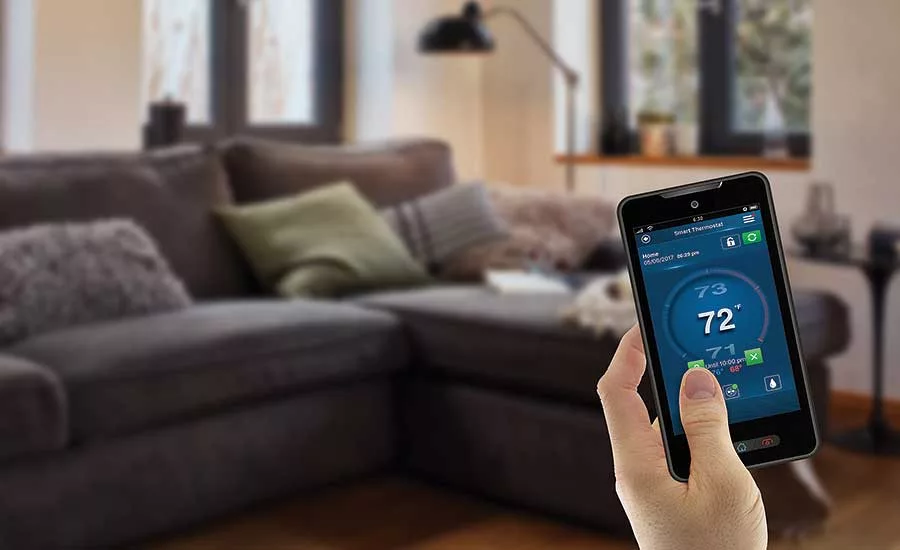
The BCC100 app allows the user to remotely control all of his or her thermostat’s settings, adjust the schedule on-the-go, or set it to vacation mode to save energy. Photo credit: Bosch Thermotechnology
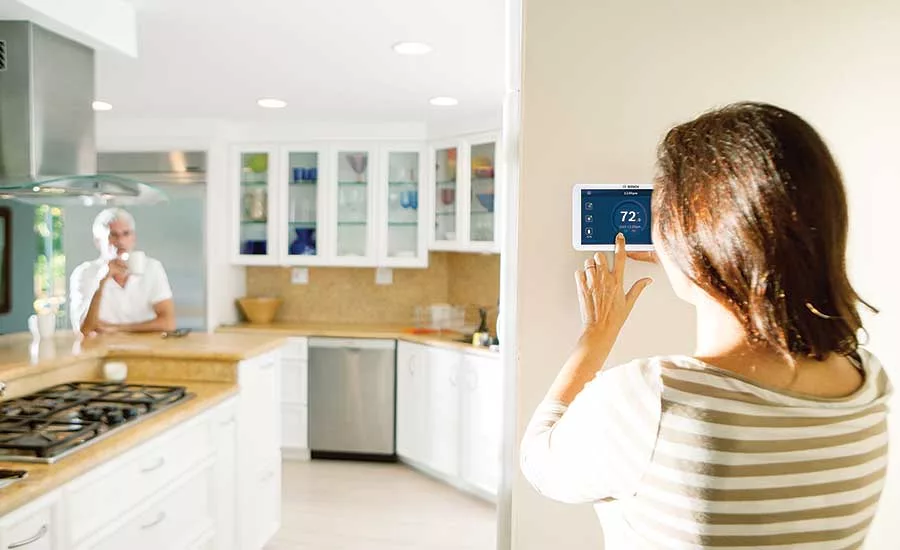
The Bosch Connected Control’s full-color, 5-inch display touchscreen allows easy scheduling to provide the most energy-efficient and comfortable temperature for your home. Photo credit: Bosch Thermotechnology
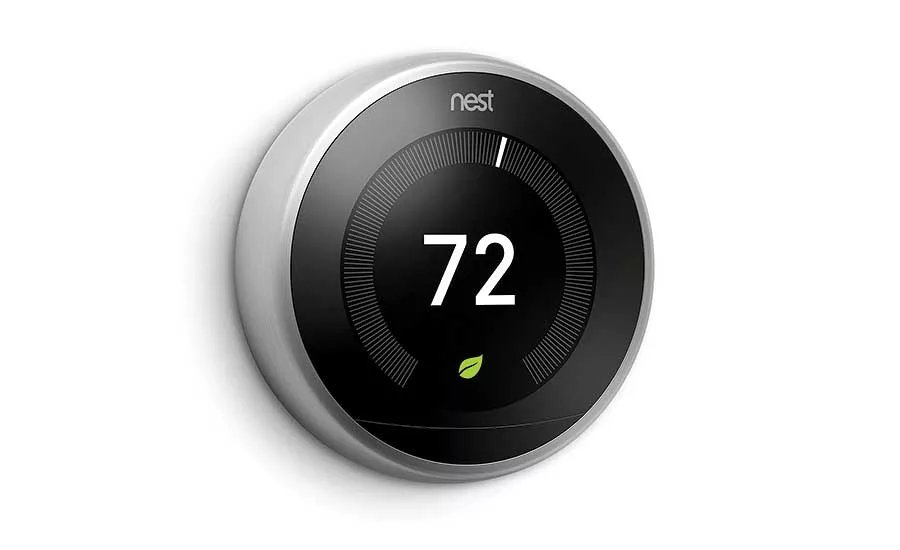
The Internet of Things (IoT) and smart products have infiltrated the North American household, including the thermostat market.
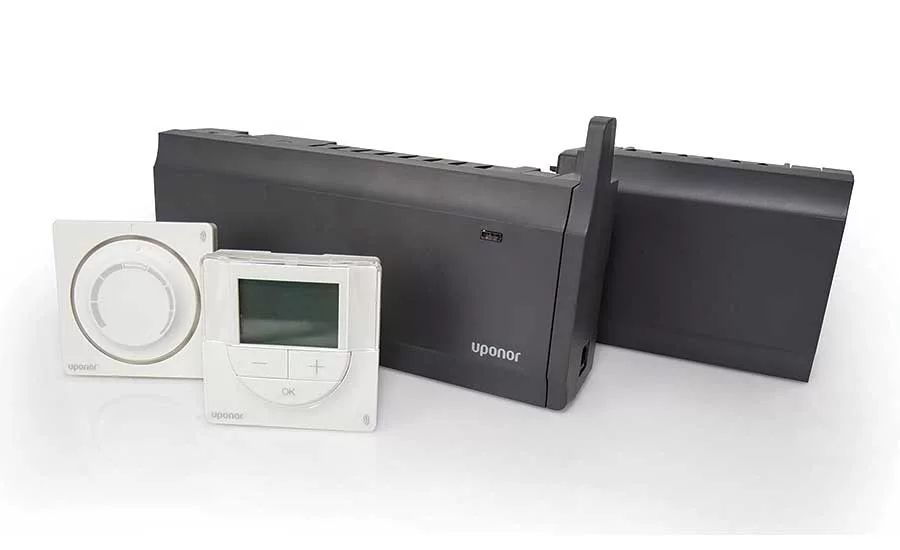
The Climate Control Zoning System II is a wireless control designed especially for residential hydronic radiant heating applications. The system, which consists of a base unit and wireless thermostats, communicates via radio link to provide energy-efficient comfort and precise temperature control for every room in a home. Photo credit: Uponor North America
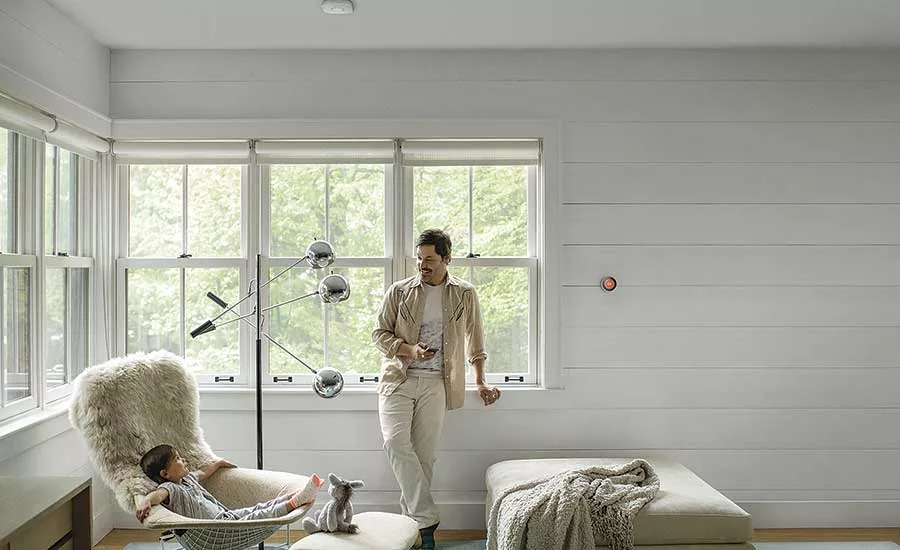
A shift in consumer demand for voice control across smart home devices includes thermostats. Currently, Nest users can control their devices through Google Home and Amazon Echo integrations. Photo credit: Nest Labs
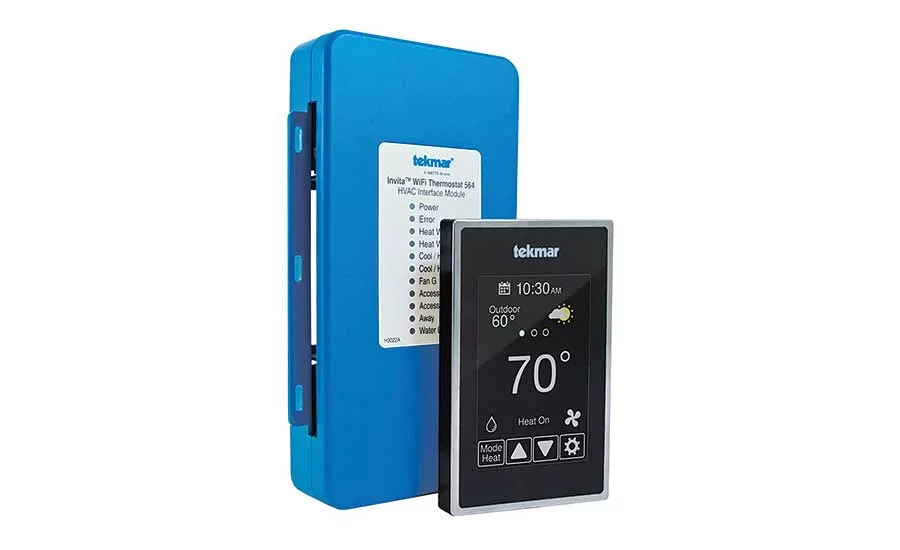
The Invita WiFi thermostat from tekmar works with most types of heating and cooling systems; the Invita Connect app provides secure Wi-Fi adjustment and can send email notifications when there are problems with the HVAC system. Photo credit: tekmar, a Watts brand
The Internet of Things (IoT) and smart products have infiltrated the North American household, including the thermostat market. Through their learning capabilities and remote accessibility via Wi-Fi and mobile apps, these products give homeowners the ability to control their heating and cooling systems from anywhere, anytime.
Yet the hydronic industry has been more hesitant to accept the technology, largely because many of the first wave of smart thermostats were not designed to handle the unique requirements of hydronic and radiant systems. However, things are changing, says Gene LaNois, head of Professional Channel, Nest Labs.
“In the last two years, the pace of adoption has been quite significant,” he says. “With the addition of other hydronic smart products coming into the space — including leak detection and more — the awareness and adoption from professionals has become high.”
Now more than ever, there is an opportunity to upsell smart thermostat products to customers with hydronic radiant heating systems.
Serving the hydronic market
While the hydronics market has a long history of automation in commercial environments, the big change lately has been the adoption of low-cost smart devices at the residential level, says Jay Vath, product manager, tekmar Control Systems.
“Most smart thermostats have been designed for the residential forced-air market and in many cases do not address the differences between forced-air and hydronics,” he explains. “Examples of this include the prevalence of multiple zones, radiant floor heating and the associated time delay to warm up, and the use of outdoor reset within boilers to vary system capacity. Well-designed smart hydronic controls take these needs into consideration and accommodate them fully.”
However, some manufacturers are recognizing the need for smart devices that work with hydronic systems and are designing products to meet that need.
“Because radiant systems take longer to heat up, it can be difficult to set a temperature schedule that gives you the level of comfort you want on time,” LaNois says. “Our thermostats come with a feature called True Radiant, where the Nest thermostat learns how long your radiant system takes to heat up your home. It’ll turn the heat on early to reach the scheduled temperature, then turn it off early so your home won’t heat over the temperature you want.”
Mike Caneja, IoT product manager, Bosch Thermotechnology Corp., says the hydronic heating market is adopting these new smart thermostat devices slowly as companies continue to figure out the zoning challenges of a radiant system when used with smart thermostats.
“Bosch offers two connected thermostats: the Bosch Connected Control (BCC100) and the Bosch Control (CT100). It’s a fully modulating thermostat that communicates directly with the boiler and provides information in terms of consumption and then modulates the amount of power required to operate the boiler. This modulation increases efficiency and may lower the cost of use for the homeowner.”
Manufacturers are also integrating more sensors into their smart thermostats in order to optimize occupant comfort.
“tekmar’s Wi-Fi thermostats 561, 562 and 563 operate hydronic radiant floor-heating systems,” Vath says. “These thermostats are unique in that they have the option to receive information from a floor sensor. This function protects woods floors from damage that can happen when a subfloor is overheated.”
Tim Botten, single-family segment specialist, Uponor, says the most important thing to keep in mind is that smart thermostats can only benefit a system if the system is already designed properly and functioning optimally.
“The thermostat and hydronic system must have a symbiotic relationship to ensure the desired comfort of the space can be met,” he says.
What customers want
Simply put, customers want Wi-Fi and remote connectivity from their thermostat to control temperatures when they are away from home, Caneja says.
“Another feature customers want is smart home compatibility, such as Google Assistance and Amazon Alexa,” he adds. “Consumers also want a bigger screen that has a tactile interface to give them complete control of their heating and cooling equipment.”
LaNois also says they have seen a shift in consumer demand for voice control across smart home devices, including thermostats. Currently, Nest users can control their devices through Google Home and Amazon Echo integrations.
But along with connectivity come concerns about safety, Vath says. “Customers are increasingly concerned about internet security and privacy.”
Botten says customers want thermostats that are easy to operate with functionality that require little to no user interface.
“Uponor offers the Climate Control Zoning System II for residential hydronic radiant heating,” he says. “The system includes wireless thermostats for flexibility in placement without the need for invasive drilling, cutting or running of wires.”
Upselling smart thermostats
With advances in smart thermostat technology that make them more hydronic- and radiant-friendly, both consumers and contractors now have the opportunity to benefit from these devices.
“The biggest market for smart thermostats is the replacement market,” Caneja says. “Contractors can use customer’s demands of smart thermostat features to get them to replace their old, non-connected thermostat. The contractors would gain value by upselling the connected thermostat, which has a higher cost, so the contractor would gain margin on that profit.”
“A contractor can upsell and make a profit by explaining how the thermostat simplifies their lifestyle while making energy conservation a reality,” Vath says. “A smart thermostat is usually easier to use and offers peace of mind should something go wrong with the HVAC equipment.”
Programs also exist to help contractors sell these smart products.
“We have a very robust Pro channel and Nest Pro program to ensure that contractors can get the best deal possible on professional- ready Nest devices along with longer warranties vs. the retail DIY products,” LaNois says.
However, it is important to note that smart thermostats, even if they are compatible with a customer’s hydronic/radiant system, aren’t always the most sensible choice.
“Homeowners need to determine their expectations for controlling the comfort in their home,” Botten says. “Do they want remote access? Do they have a consistent schedule throughout the week and month? A standard programmable thermostat at a fraction of the cost of a smart thermostat can maintain comfort levels within a home very efficiently.”
Vath adds that there is a small minority of customers that reject Wi-Fi products for risks they perceive, such as health concerns, or privacy issues.
“Understanding your customer and their concerns are the key to upselling,” Vath says. “In almost every case, if answers to their concerns are already known, or can be researched, they’ll opt for the greater control and peace of mind that smart thermostats offer.”
The future of smart T-stats
The smart home market is still growing, and manufacturers expect smart thermostat sales will only continue to climb.
“Smart thermostat adoption continues to grow year-over-year, according to data from Parks & Associates, so we feel strongly that we’re well positioned to grow our products and offerings with the increasing demand,” LaNois says.
“I also see a trend with electrical and gas utilities using smart communication to automatically change electrical and/or gas loads to reduce peak loads,” Vath says. “This will help to reduce the need for large, expensive infrastructure projects.”
Ultimately, seamless integration with the smart home as a whole is on the horizon, Caneja says.
“In the future of smart thermostats and connectivity, these smart controls will be integrated into smart homes,” he says. “The heating and cooling equipment will become part of a broader ecosystem of the smart home.”
Looking for a reprint of this article?
From high-res PDFs to custom plaques, order your copy today!





